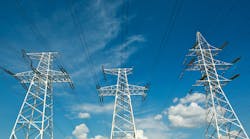Photo 44315777 © Kostia Osypov | Dreamstime.com
VEIR has completed and energized a 100-foot overhead superconductor power line with a novel cooling approach that could help meet the global need for new power transmission. This technical milestone coincides with the company securing an additional $24.9 million in series A-2 funding from investors including Breakthrough Energy Ventures, The Engine Fund, Congruent Ventures, Fine Structure Ventures, Galvanize Climate Solutions, and VXI Capital.
VEIR’s technology provides a solution to help modernize the electric power grid, a critical need in meeting global clean energy goals. As new transmission lines become necessary, VEIR’s new superconductors will increase transmission of 5-10x more energy than the current grid, using existing rights of way and easing siting and permitting reviews for developers.“As we work to rapidly accelerate transmission capacity and curb global greenhouse gas emissions, this outdoor demonstration validates our technology’s ability to deliver more energy in a more efficient manner,” said Tim Heidel, CEO of VEIR. “The fresh capital we’ve raised will help us to continue to move our technology to market at a time when it’s more important than ever in meeting the world’s pressing energy demands.”
VEIR’s end-to-end, low voltage, single phase outdoor demonstration follows its indoor demonstration last year that carried 4,000 Amperes of electrical current, a first ever for an overhead superconducting power line.
Other applications of superconductor technology use underground closed loop systems with mechanical refrigeration stations, an approach that hampers broadscale, long-distance grid deployment. VEIR’s innovation in how superconducting materials are cooled will allow superconductors to be installed overhead for the first time, thus making the technology commercially viable in broad market applications.
VEIR’s outdoor demonstration uses its proprietary technology to cool the superconducting line with liquid nitrogen, transmitting electricity with negligible losses that enable the lines to operate at levels of electrical current that are much higher than conventional lines. Because of that, VEIR lines can add much-needed capacity to the grid without triggering as many or as onerous and time-consuming siting and permitting requirements as conventional lines.
VEIR closed Series A funding of $10 million in March 2021 with investors Breakthrough Energy Ventures, The Engine, and Congruent Ventures. To date, VEIR has raised $36.7 million in private capital to bring its technology to the commercial market. VEIR’s series A-2 fundraise enables VEIR to rapidly develop full product specifications for each of the subsystems of the VEIR solution. Such activities will culminate in an AC overhead VEIR solution that meets all the many standards required by the electric utility industry
“Transmission constraints represent the single largest barrier to the US’s ability to meet its electrification goals,” said Michael Kearney, Partner at The Engine Fund. “VEIR offers a far more cost-effective solution for developers and utilities, while ultimately reducing costs for consumers. Its overhead superconducting power line technology will modernize the existing electric grid by enabling capacity expansion within existing rights of way. With this capital, the team can launch full speed toward scaling product development toward commercialization.”
“Galvanize and VEIR share a mission to rapidly accelerate solutions to mitigate and adapt to global climate change,” said Veery Maxwell, Partner and Co-Head, Innovation & Expansion at Galvanize Climate Solutions. “Galvanize is excited to partner with VEIR to quickly add the transmission capacity necessary for the clean energy transition by redefining what high-capacity transmission looks like.”
In October 2022, VEIR and National Grid, an electricity, natural gas, and clean energy delivery company with operations in the US and the UK, announced a five-year collaboration agreement to advance VEIR’s superconductor transmission solution. National Grid will help VEIR develop the solution at a utility scale, with testing expected at National Grid’s facilities in Millbury, Mass. and the UK.
